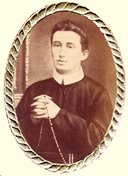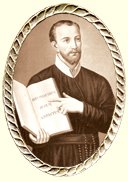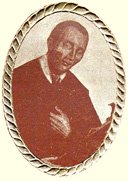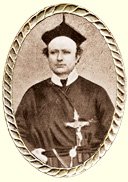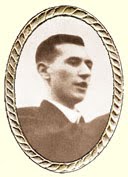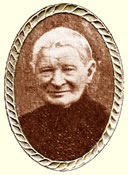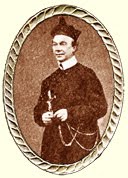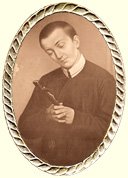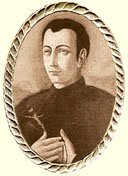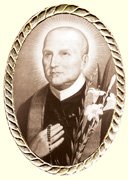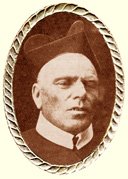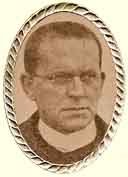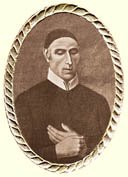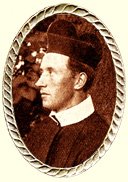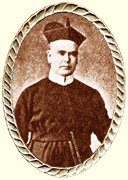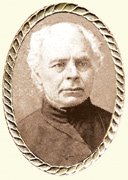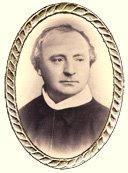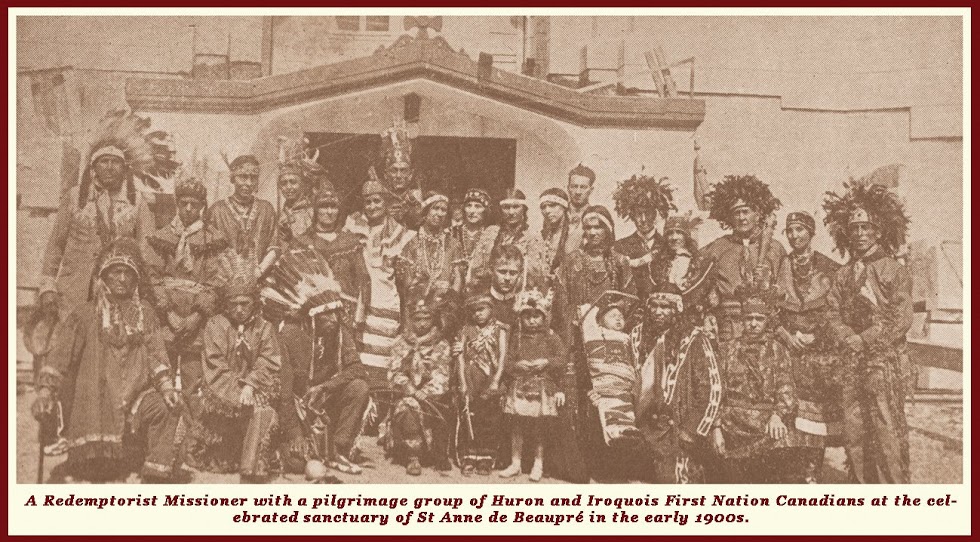Saturdays with Our Mother of Perpetual Succour I
The Cure of Marie Kannengiesser
 In the north of the French department of Moselle one may find the parish of Hargarten. It has the distinction of having given to the Redemptorists one of their most learned and distinguished members, Fr Jean Kannengiesser, C.SS.R.
In the north of the French department of Moselle one may find the parish of Hargarten. It has the distinction of having given to the Redemptorists one of their most learned and distinguished members, Fr Jean Kannengiesser, C.SS.R.Now Fr Kannegiesser had a sister named Marie who was born in Hargarten in 1842. She too had felt herself called to the religious life, and had asked and obtained permission to enter the Benedictines of Flavigny. Suddenly, during her novitiate, a very grave malady came upon her. The doors of the monastery, after which her generous soul had so longed, seemed to close before her forever and a cure seemed impossible. Thus, wounded in body and soul, the poor novice had to take again the way of the world, which she had never wanted.
A walk of about one hour separates Hargarten from Téterchen, where, since 1847, the Redemptorists had an important monastery. As one would expect, the Redemptorists of Téterchen were not slow in spreading the devotion of Our Mother of Perpetual Succour in all of Lorraine and the Saarland. As true sons of the Most Zealous Doctor, they wanted to redouble their efforts to this effect and thus they obtained from Rome a painted copy of the original image, blessed with particular attention by Pope Pius IX. The reception of the image was grand and solemn, and it was at this moment that the ex-novice came to ask the aid of Our Lady.
Here follows the authentic account.
“[...] She was suffering from an a disease of the spinal marrow. The house doctor declared to Fr Laglasse that he considered the sickness as incurable and mortal. He told the same thing to the superiors and also attested it in different letters which he wrote to the parents of the sick woman. She was to spend 18 months in her paternal home in great difficulty.
 Marie, that was her name, who could no longer count on the help of men, had recourse to Heaven. Hearing that an image of Our Mother of Perpetual Succour was to be enthroned at Téterchen [...] she prepared herself for this solemnity by a novena of prayers. On the feast day she went on pilgrimage to Téterchen and confessed and received Holy Communion in our church, and then returned the four kilometers without being in the least bit disturbed by the bad weather, which would normally have brought on a new increase of her infirmities.
Marie, that was her name, who could no longer count on the help of men, had recourse to Heaven. Hearing that an image of Our Mother of Perpetual Succour was to be enthroned at Téterchen [...] she prepared herself for this solemnity by a novena of prayers. On the feast day she went on pilgrimage to Téterchen and confessed and received Holy Communion in our church, and then returned the four kilometers without being in the least bit disturbed by the bad weather, which would normally have brought on a new increase of her infirmities.Three days later she made another pilgrimage to Téterchen to ask once more for the benevolent protection of Our Mother of Perpetual Succour. While she knelt before the venerated image she heard an interior voice which said: “But you are cured, you feel no more pain, and therefore you injure the Blessed Virgin if you continue to look after yourself as in the past.” From that moment she felt not the least pain any more, she neglected all the precautions, so necessary beforehand for her health, she ate and worked like a healthy person who had never been the slightest bit ill. Within two years she sought the austerity and rigour of the Carthusianesses of Grenoble [...]”
The document, signed by Fr Jacques Lilliée, C.SS.R and dated 8 September 1868 is preceded by the declaration: “All these facts we believe come from persons worthy of credence and we have taken all the precautions necessary, in as much as is possible, to guarantee the historic authenticity of them [...]”
The best mark of a true cure is its duration. At the time that this account was written Marie Kannegiesser was still alive and had entered her 90th year.With her newly re-established health she took herself to the monastery of the Holy Cross at Beauregard, near Grenoble, where the Carthusianesses chanted day and night the glory of God. There she received the name of Rosaline while retaining that of her baptism which reminded her of the singular favour she had received.
 For long years Sr Marie-Rosaline served Our Lord in the sweet solitude of Beauregard but then came the sad years inaugurated in France by Combes. Like so many others, Sister had to take the road of exile. On 13 June 1904 she saw her beloved land of the Grand-Chartreuse for the last time and departed with her companions for Italy. They stopped near Turin at Giaveno.
For long years Sr Marie-Rosaline served Our Lord in the sweet solitude of Beauregard but then came the sad years inaugurated in France by Combes. Like so many others, Sister had to take the road of exile. On 13 June 1904 she saw her beloved land of the Grand-Chartreuse for the last time and departed with her companions for Italy. They stopped near Turin at Giaveno.By the grace of God here another monastery arose, that of San Francesco. Mother Marie-Rosaline became its prioress. At the time of writing the monastery was flourishing. She had the joy there of welcoming her brother, Fr Jean, who was also in search of a refuge for his Fathers. At an advanced age she gave up her superiorship always thanking Our Lady for the health she had enjoyed for 65 years. †
(From an account by Rev. Fr Jean-Baptiste Raus, C.SS.R., Le Perpétuel Secours, June 1931)




















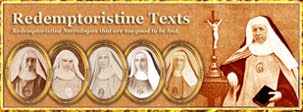
.jpg)









